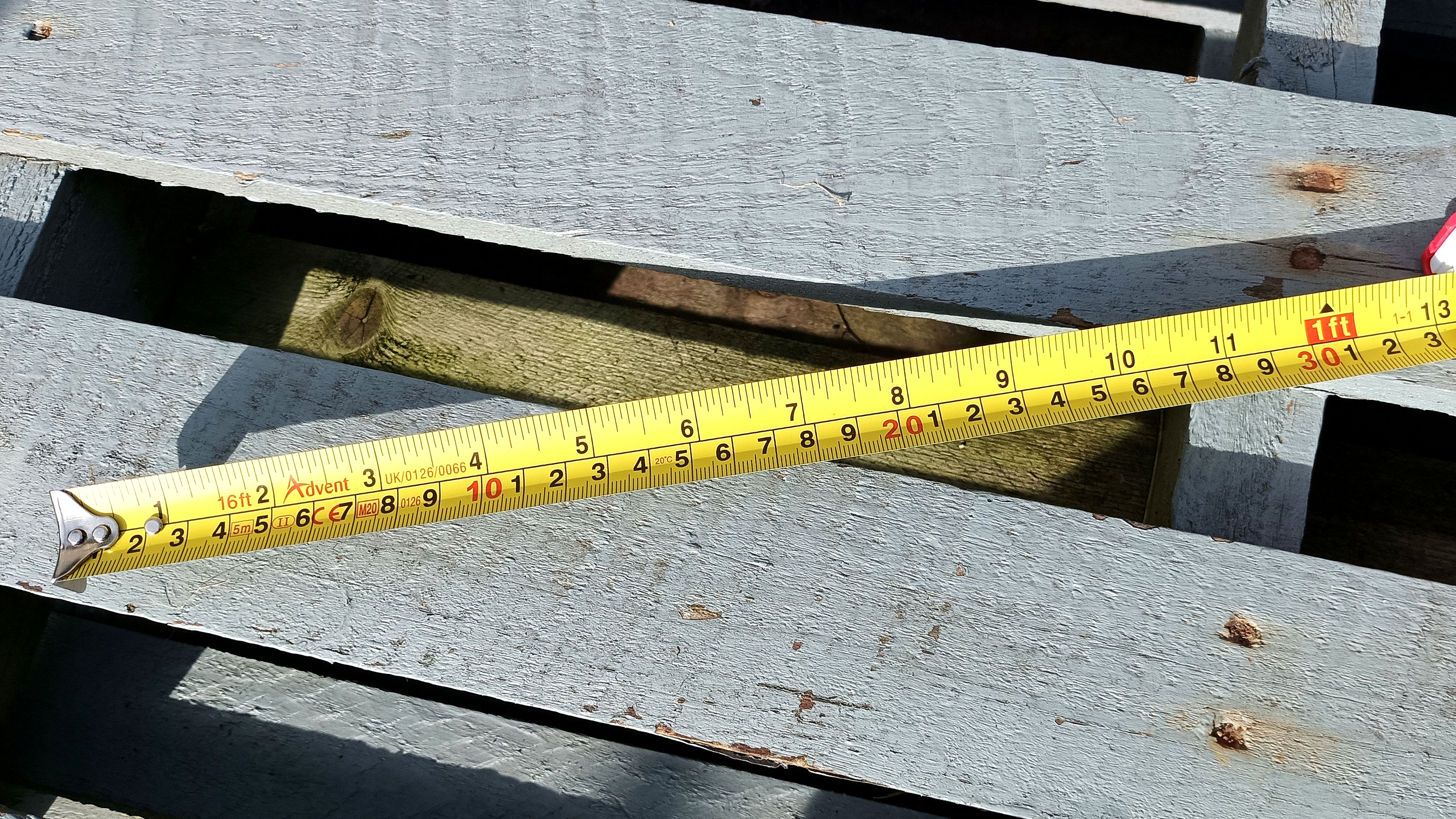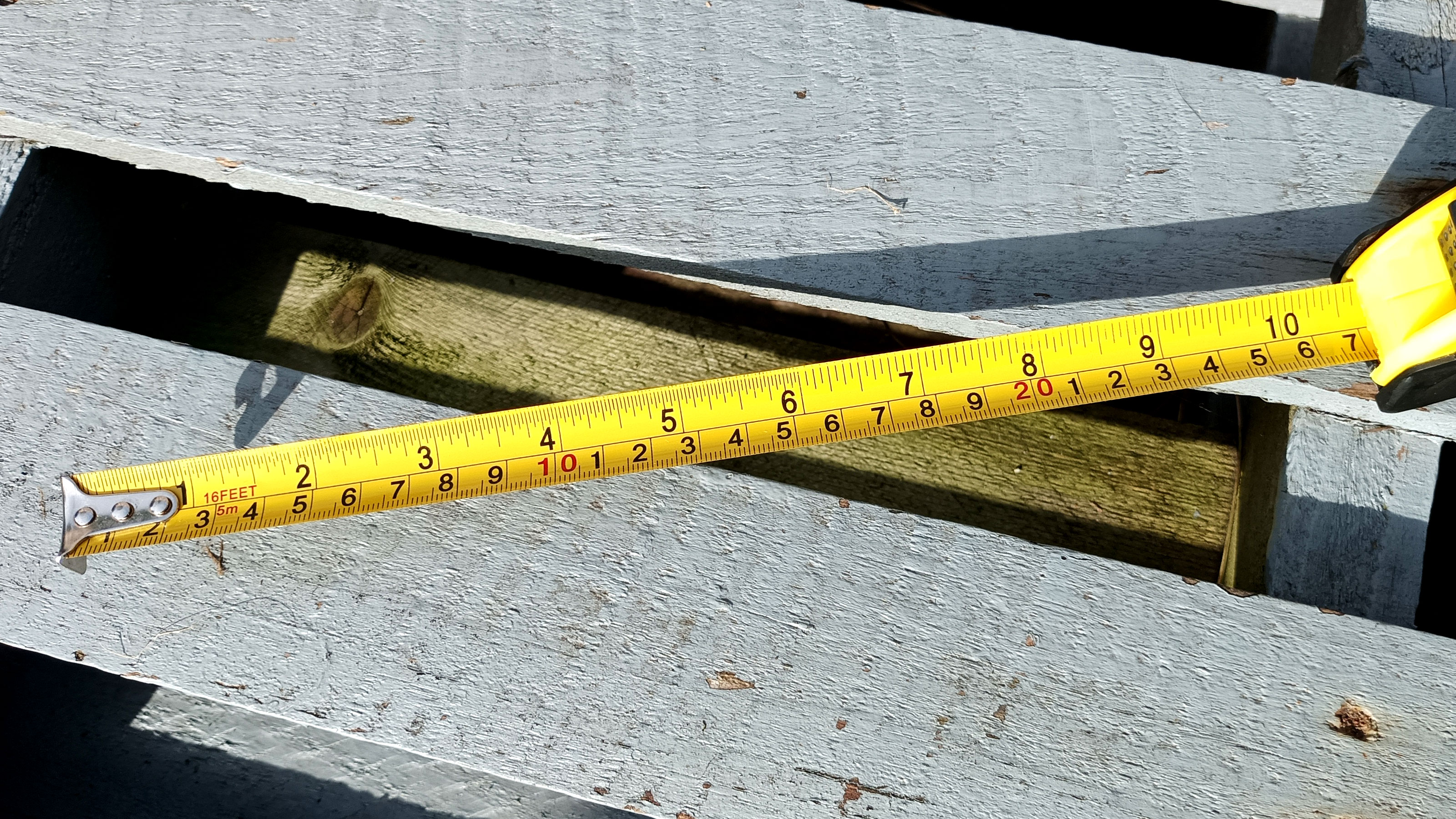Tape measure cheat sheet: How many of these 'hacks' do you know?
Our tape measure cheat sheet, expert tips and advice will make sure that you get the most from your tape measure

Got a tape measure? Then you need to check out our tape measure cheat sheet. An essential piece of kit for every DIYer, home renovator and self builder the trusty tape measure needs to be used correctly and given some love and looked after properly to get the best from it.
Every tape measure isn’t exactly the same. Some will apply to certain standards, some will have metric and imperial measurements, some won’t. Some will have different markings, so you could be asking yourself what is the diamond on a tape measure? What does it do?
Whatever tape measure you have, our cheat sheet, tips, hacks and advice will help you make the most of your tape measure.
Why imperial and metric measurements?
If you’re on the lookout for a new tape measure the first thing you need to think about is what type of tape measure you need. What are you going to use it for? Standard metal tape measures like the STANLEY Tylon Tape Measure from Amazon are a common choice for everyday DIY projects.
But these come in all shapes and sizes, so you need to make a few simple decisions to help you choose the tape measure you want. In the UK most tape measures come with imperial (inches/feet) and decimal (cms/metres) markings. This is because the UK still works with both measurements. Shane Patterson, Category Manager at Jewson explains why, “For pre-metrication construction work the blade is marked at 16” intervals. This was the standard centre for the timbers in stud wall and roof joists where standard 8’ x 4’ sheets of plasterboard or timber were used.” He continues, “Post-metrication the timbers are set at 400mm centres for use in conjunction with 1200 x 2400mm standard sheet sizes.”
A simple example of why both are still used is when you are buying CLS timber. Common sizes are 2 x 3 inches (50mm x 75 mm) and 2 x 4 inches (50mm x 100mm), some manufacturers and retailers will use the metric measurement, some will use the imperial measurement, while a lot use both. So make sure that you have both measurements options. Some cheaper, unbranded tape measures often only have one or the other.
Tape measure features to look out for
Other features to look out for are the blades itself. A wider blade is typically stronger, which means it can go further without bending. This is known as stand out as Patterson explains in more detail. “Stand out is the length that a metal blade tape measure can be extended horizontally before it ceases to be self supporting. He continues, “It is directly related to the width and curve of the blade – typically the wider and more curved the blade is, the longer the stand out. The trade-off is that marking measurements from a heavily curved broad blade can be awkward and the tape will be bulky.” But it has benefits as Patterson goes on to reveal, “Stand out is valuable because it allows horizontal unsupported measurements to be made, i.e. the tape will not collapse and you won’t need a second pair of hands for holding and marking out.”
Patterson also suggests that you check the blade coating, as this helps protect the blade. “After a blade has been printed with its markings a protective coating is applied to provide resistance to wear and tear. The quality of this coating and the process by which it is applied is a key differentiating factor between high and low quality tapes.”
Consider what length you want. A 5m or 8m tape measure is a common choice. This will be long enough to measure a room in one go and any shorter measurements. Look for accuracy markings, EC Class I and EC Class II are the common options. EC Class I being the most accurate with a 1.1mm margin of error on a 10m tape. Also consider the material and shape of the tape measure, is it easy to grip and does it have a thumb lock.
5 quick tape measure tips to improve your handling
When using your tape measure there are few pointers that can prolong the life of your tape and give more accurate measurements. Here we offer a few simple suggestions that you should think about.
1. Keep it clean
It may seem obvious, but we can guarantee that cleaning your measuring tape is rarely given a thought and even less likely to happen. But give it a wipe down with a cloth when it gets dirty and make sure to dry it when it gets wet. If you draw water inside the tape measure the mechanism will rust and stop working properly.
Bring your dream home to life with expert advice, how to guides and design inspiration. Sign up for our newsletter and get two free tickets to a Homebuilding & Renovating Show near you.
2. Stop bending into corners
It’s not an uncommon practice when measuring inside corners like a window frame to bend the tape. You’ll struggle to get an accurate measurement as the tape won’t fit right into the corner, so you are guessing.
To get an accurate measurement make a pencil mark roughly halfway between the inside corners and measure from one corner to the mark and then the other corner to the mark and add together.
3. Take control of the blade return
It might be fun to unleash the thumb lock and watch the blade disappear very quickly back into the body of your tape measure. But it's not a wise practice if you want to keep your tape measure in good working order and your hands unharmed.
We can tell you from experience that the blade can whip back give you a few unwanted bruises and painful cuts. It will also damage the mechanism, dent the edge of the blade and affect the accuracy of the hook.
4. Become a Johnny two tapes
This is not a tip for those who always keep everything close to hand, but we know that’s not everyone. Get yourself two tape measures – check that they are both the same by marking a measurement with one and then making sure the second is the same . Then keep one where you are making the measurement and one where you are working.
Alternatively, get a tool belt or work trousers like these Scruffs Pro Flex Holster Trouser from Amazon and keep a spare tape measure in a pocket.
5. Write down your measurements
It's a simple suggestion, but definitely one worth taking note of. If you’ve only got one measurement to remember it's not such a big deal, but you may get distracted and have to measure again.
If you have more than one measurement, measure and measure again to ensure accuracy and then write down on the surface you are working on, or even a waste piece of wood or a nearby wall.
FAQs
How much should I pay for a tape measure?
Like most DIY tools it will depend on a few factors including the brand, quality and length. You can get one out of the bargain bin at your local DIY store for a couple of quid but it will lack accuracy, build quality and longevity.
So it makes sense to invest a little extra and get a decent tape measure with good build quality. Expect to pay around £6-£10 for a 5 metre measure and a few quid more for a 8m or 10m tape measure.
If you want something a bit more heavy duty with higher accuracy level and good standout (the length a blade can extend before it twists and bends) then you will have to pay more. The Stanley FATMAX 8M tape measure from Amazon is a good choice. This offers a Mylar coated blade making it more resistant to abrasions, a wide 32mm blade, an impressive standout of 3.3m and a three rivet hook.

Steve Jenkins is a freelance content creator with over two decades of experience working in digital and print and was previously the DIY content editor for Homebuilding & Renovating.
He is a keen DIYer with over 20 years of experience in transforming and renovating the many homes he has lived in. He specialises in painting and decorating, but has a wide range of skills gleaned from working in the building trade for around 10 years and spending time at night school learning how to plaster and plumb.
He has fitted kitchens, tiled bathrooms and kitchens, laid many floors, built partition walls, plastered walls, plumbed in bathrooms, worked on loft conversions and much more. And when he's not sure how to tackle a DIY project he has a wide network of friends – including plumbers, gas engineers, tilers, carpenters, painters and decorators, electricians and builders – in the trade to call upon.

